If you are a fan of healthy baking, you have already used walnuts in your recipes.
These crunchy and nutritious nuts can be added to many dishes to add flavor, texture, and important health benefits.
However, if you’re looking for an alternative nut or seed due to allergies or dietary considerations (or simply wanting something new), then there is good news.
A variety of substitute ingredients to use in place of classic walnuts can be found right in the grocery store!
Not only will they provide delicious additions to baked goods and savory meals, but each option has unique ripple effects on nutrition.
What Are Walnuts?
Walnuts are a nutrient-rich tree nut that provides essential fatty acids, proteins, vitamins, and minerals.
They are also high in fiber and antioxidants.
Walnuts can be eaten raw or used in many different types of cooking, from baking goods to salads and entrees.
The light, subtle flavor of walnuts pairs well with both sweet and savory dishes.
Walnuts can also be used in desserts, adding a crunchy texture to cakes and cookies.
For added nutrition, walnuts are often added to granola mixes, energy bars, and oatmeal.
They can even be ground into flour for special baking recipes.
[display-posts id=”2181″ image_size=”thumbnail” posts_per_page=”1″]
Walnuts can easily be incorporated into meals that include vegetables, grains, and other nuts.
They pair well with dried fruits and herbs such as sage and rosemary.
Walnuts can also be used in savory dishes like pilaf or risotto, adding a crunchy texture and flavor boost.
They can be toasted in oil or butter for a flavorful addition to salads and other dishes.
Toasting walnuts will bring out their natural sweetness, making them a great topping for sweet dishes like cobblers and muffins.

Substitutes For Walnuts
If you don’t have walnuts in your pantry, several alternative options are available.
Pecans
Pecans are a type of tree nut and one of the most common types of nuts in the United States.
Pecan trees grow abundantly throughout the southern states, particularly in Texas and Georgia.
[display-posts id=”2263″ image_size=”thumbnail” posts_per_page=”1″]
As such, pecans are often used as an ingredient in traditional Southern dishes.
Pecans are high in unsaturated fats, making them a healthier alternative to other nuts.
Furthermore, pecans are rich in dietary fiber, vitamin E, selenium, magnesium, and zinc.
Pecans are a great alternative to walnuts in baking because they have a slightly milder flavor that is still nutty.
They can be used to make classic Southern dishes such as pecan pie and praline cookies.
Pecans also work well in savory dishes like salads, stuffings, and casseroles.
The nuts can be chopped and added to dishes for a crunchy texture or used as an ingredient in sauces and dressings.
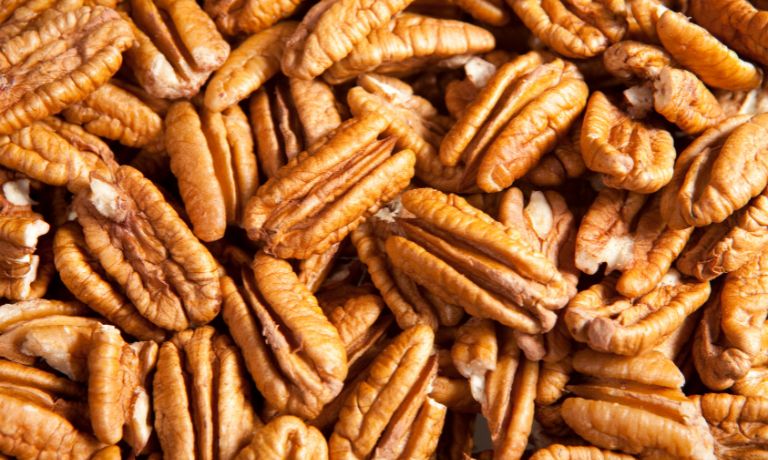
Hazelnuts
Hazelnuts, also known as cobnuts or filberts, are a type of nut native to certain parts of Europe and Asia.
They have an oval shape with a thin brown shell that is easy to crack open.
The kernel inside has a nutty flavor and creamy texture.
Hazelnuts are used in many different types of cooking, including baking, roasting, and grinding them into flour.
Hazelnuts have a similar flavor without the strong aftertaste that walnuts can have.
They are also higher in fiber content than other nuts, making them an excellent source of nutrition.
Also, hazelnuts are low in saturated fat and rich in healthy monounsaturated fats, providing a good source of protein, magnesium, and vitamin E.
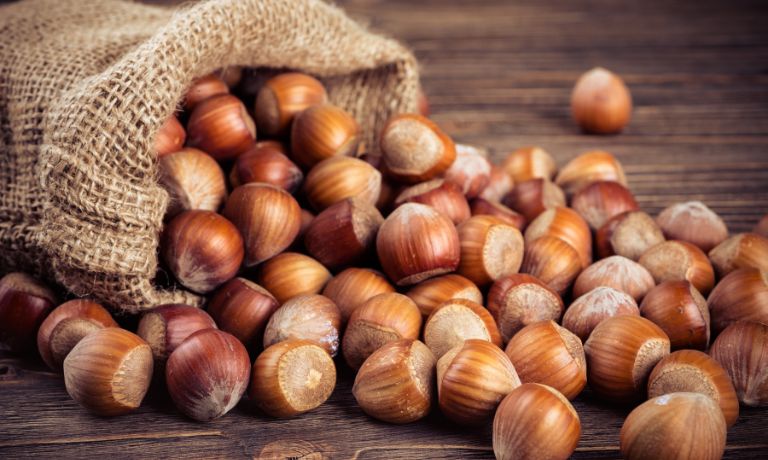
Almonds
Almonds are a type of tree nut native to the Middle East and South Asia.
They have a mild, nutty flavor and crunchy texture, making them a popular ingredient in many dishes.
[display-posts id=”2659″ image_size=”thumbnail” posts_per_page=”1″]
Almonds can be eaten raw or roasted, used in baking, ground into flour for gluten-free cooking, and even made into almond milk.
They are also a popular ingredient in many Indian and Middle Eastern recipes.
In addition, almonds contain more fiber, healthy fats, protein, vitamins, minerals, and antioxidants than walnuts.
Almonds are also a great source of calcium and magnesium, two important nutrients for bone health.
When replacing walnuts with almonds in recipes, using the same amount of almond meal or sliced almonds as you would have used for walnuts is recommended.

Cashews
Cashews are a type of nut native to South America, though now they are grown in many different countries worldwide.
Cashews have a softer texture than walnuts and tend to be less bitter.
Additionally, cashews are a great source of plant-based protein and healthy fats and minerals like magnesium and iron.
They also contain antioxidants that can help protect against oxidative damage in the body.
These benefits make them an excellent choice for adding to recipes where walnuts are normally used.
Try substituting cashews for walnuts in dishes like salads, curries, and stir-fry recipes for a delicious nutty flavor.
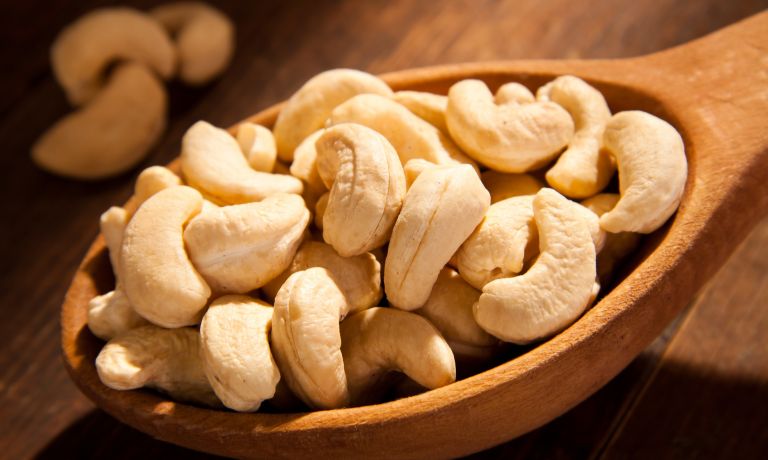
Macadamia Nuts
Macadamia nuts are a type of tree nut native to Australia and parts of Southeast Asia.
They have a unique flavor that sets them apart from other nuts and offers great nutritional benefits.
[display-posts id=”2638″ image_size=”thumbnail” posts_per_page=”1″]
Macadamia nuts contain healthy fats, vitamins, minerals, and antioxidants that can help improve overall health.
As a substitute for walnuts in cooking, macadamia nuts offer a slightly sweeter flavor and a creamy texture.
These nuts can be used in baking, topping for salads or oatmeal, or blended into nut butter for a delicious spread.
Macadamia nuts also pair well with other ingredients like fruits and chocolate for tasty desserts.
Because of their high-fat content, they are also a great energy source, making them an excellent snack choice.
By using macadamia nuts instead of walnuts in cooking, you can reap the benefits of their higher nutrient content and unique flavor.
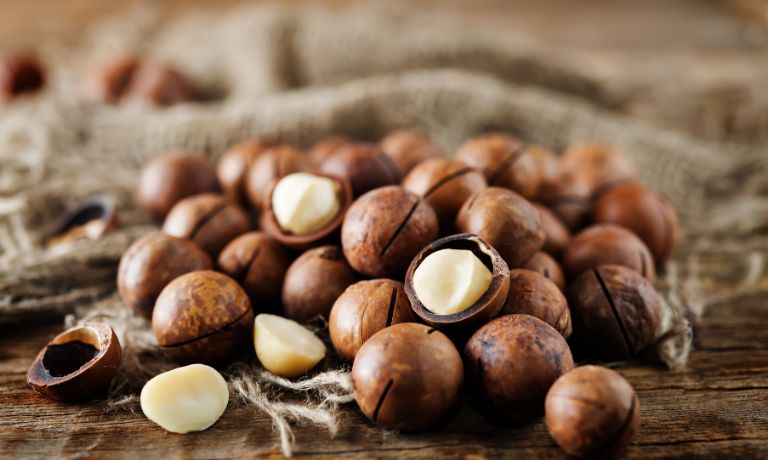
Peanuts
Peanuts are a type of legume that is related to beans and lentils.
They are not nuts, but their texture and flavor can make them a viable substitute for walnuts in cooking.
Peanuts are naturally high in protein, fiber, and healthy fats such as monounsaturated fat.
This makes them very nutritious and a great addition to healthy dishes.
Peanuts can add crunch and flavor to vegetable dishes, salads, and baked goods.
They can also be used instead of walnuts for thickeners in sauces or as an ingredient in granola bars.
However, note that peanuts are higher in fat than walnuts, so if you are trying to watch your fat intake, consider other nut substitutions.
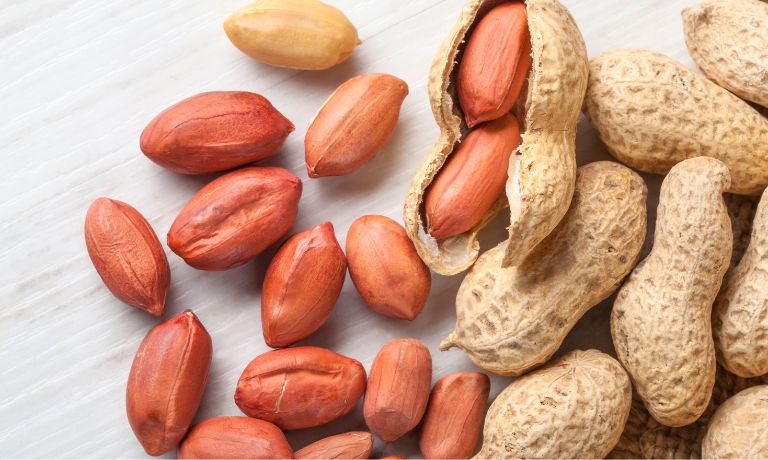
FAQs
Can You Use Walnuts Instead Of Almonds?
Yes, you can substitute walnuts for almonds in baking or other recipes.
Walnuts offer a slightly different flavor and texture than almonds but are a suitable alternative when you don’t have almonds.
For best results, try to match the quantity of walnuts with the amount of almonds called for in the recipe.
Can You Use Oats Instead Of Walnuts?
Yes, you can substitute oats for walnuts in most recipes.
Oats provide many of the same nutrients as walnuts and have a milder flavor that may be more appealing to some people.
However, remember that oats do not provide the same crunchy texture as walnuts.
Are Walnuts Similar To Peanuts?
No, walnuts and peanuts are not the same.
Peanuts are a legume that grows underground, while walnuts are tree nuts that grow on trees.
Walnuts have a much higher fat content than peanuts, and their flavor differs.
Conclusion
Walnuts are an incredibly tasty and nutritious nut that can be used in many recipes.
Make excellent replacements if you want a substitute for walnuts, almonds, cashews, macadamia nuts, and peanuts.
Each of these nuts brings unique flavor and health benefits to the table.
Whatever nut you choose as an alternative, you can rest assured that your dish will be delicious and nutritious.

